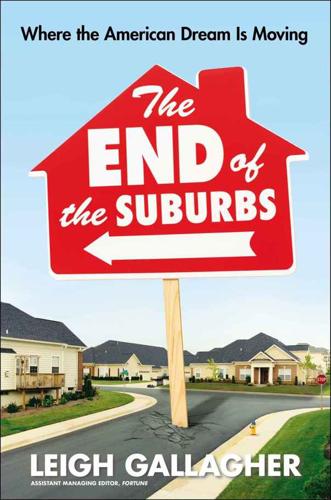
The End of the Suburbs: Where the American Dream Is Moving
by
Leigh Gallagher
Published 26 Jun 2013
Getting over conventional zoning codes is often problematic and requires lots of patience, and often compromise: FHA loan rules still limit the percentage of commercial real estate in vertical apartment units, making it hard for New Urbanism developers to secure financing for the mixed-use buildings they say are a critical ingredient in their neighborhoods. Nevertheless, New Urbanism principles have been followed and copied over the years. In 1996, Disney opened Celebration, Florida, its five-thousand-acre master-planned community near Orlando, largely on New Urbanism principles, though it did not bill it a New Urbanist community. In the mid-1990s, the Department of Housing and Urban Development adopted New Urbanist design criteria in its program to build public housing projects.
…
See also Commuting accidents and suburbs, 82–85 decreased use (2004- ), 107–12 decreased use, future view, 106–7 dependence and health, 86–89 dependence and suburban living, 79–81, 85–86, 89–91 energy efficient, 105, 108 millennials rejection of, 20 pollution and, 46, 99, 108 and suburban design, 32–34 and suburban development, 32–34, 41–42, 81–82 use, beginning of, 32 walkable communities and use, 133–34 Baby boomers, 145, 148, 160 Baby bust, 145 Baches, Demetri, 203–4 Banks, repossessed homes, reuse of, 186–87, 205–6 Barclays Center, 176 Beacon Hill, Boston, 29, 41 Beazer Homes, 24 Belmar, Colorado, 181 Bernstein, Scott, 99–102, 205 Best Buy, 45, 172 Best Buy Mobile, 172 Big-box stores emergence of, 44–45 scale-down for cities, 18, 172–73 Birth rate, decline of (2011), 144, 158 Blackstone Group, 187 Bloomberg, Michael, 159 Boccaccio, 27 Boston, renewal and growth (2011), 168 Brant, Gary, 144 Brooklyn Heights, 29 Buffalo Commons, 184 Buffett, Warren, 72 Bush, George W., 66 Butler, Win and William, 51 Calthorpe, Peter, 19, 52, 119, 120, 209 Cambridge, Boston, 29, 111–12 Camden Yards Sports Complex, 176 Caruso, Rick, 132, 198 Case-Shiller Home Price Indices, 8 Celebration, Florida, 126 Center City Philadelphia, 17–18 Charleston, South Carolina, 40 Chester County, Pennsylvania, 13 Chestnut Hill, Philadelphia, 41 Chicago corporation relocations to, 173 early suburbs of, 30 renewal and growth (2011), 167 Children automobile dependence of, 81, 85–86 cities as enrichment for, 112, 170–71 obesity problem, 88–89 population decline in suburbs, 145–47 street play, lack in suburbs, 81, 90 Cicero, 27 Cities big-box store formats in, 18, 172–73 children, benefits to, 112, 170–71 corporation relocations to, 173–76 crime, past view, 44, 167, 168, 179 decline (1970s), 44, 168 developments by suburban developers, 6, 18, 23, 163–66 empty nesters return to, 172 exodus from.
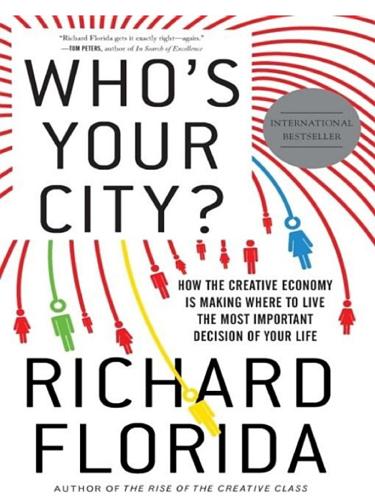
Who's Your City?: How the Creative Economy Is Making Where to Live the Most Important Decision of Your Life
by
Richard Florida
Published 28 Jun 2009
The brainchild of architects like Andres Duany and Peter Calthorpe, newburbia is a designed community with a traditional feel.7 The houses are clustered tightly together but surrounded by lots of green space. These places are typically oriented to pedestrian traffic (they restrict the use of cars) and shaped around town centers. One of the most famous examples is Celebration, Florida, on the outskirts of Disney World. But even though they have town centers, these new urbanist communities can lack diversity. Seaside, Florida, Duany’s signature project, was the community used in the movie, The Truman Show. Jim Carey’s character is unaware that he is living in a constructed reality surrounded by fake friends and family, leading a life intended for the entertainment of those who live outside it.
…
Bourgeois-bohemian Bowling Alone (Putnam) Brazil BRIC nations See also Brazil; China; India; Russia Bridging Brisbane Brookings Institution Brooks, David Brownsville, Texas Brûlé, Tyler Buenos Aires Buffalo Bureau of Labor Statistics (BLS) Burtless, Gary Busan Business Week Cairncross, Frances Cairo(fig.) Calgary Calthorpe, Peter Cambridge, Massachusetts Cambridge University Canada Capital, mobility of Carey, Jim Carnegie Mellon University Cascadia(fig.) Case, Karl Cato Institute Caves, Richard Celebration, Florida Center for International and Security Studies Center for International Earth Science Information Network Char-Lanta region(fig.) Charlotte Chicago lakefront of Children place choice and supervision of China growth of megaregions in as world’s factory Chi-Pitts(fig.)

On Paradise Drive: How We Live Now (And Always Have) in the Future Tense
by
David Brooks
Published 2 Jun 2004
They are hired by builders and retailers to make sure people have a more intense experience when they visit a store, a restaurant, a mall, or a residential development. The most influential exurb communities are Kentlands or King Farm in Maryland; Ladera Ranch in Orange County; Belle Creek in Colorado; Celebration, Florida; and the Parks of Austin Ranch in Texas. These are attractive new urbanist communities with front porches on almost every house, and people are so community-oriented and friendly that as you walk down the sidewalks, they’re going to make damn sure they say “Howdy!” These are places that have village greens, wooded playgrounds, community centers with neighborhood spas, protected-view corridors, Transit Tot day-care centers next to light-rail commuter stations, faux antique tower clocks in recently constructed town squares.
…
California Campbell, Colin cars: for Cigar Aficionado readers commuting for Cosmic Blondes/Brunettes in “crunchy” suburbs in exurbia for millionaires names of American for professionals in rural America for successful morons in traditional suburbs See also motorbikes Catcher in the Rye, The (Salinger) Celebration, Florida cell phones Chapin, James Character and Opinion in the United States (Santayana) charitable contributions See also money, attitudes towards Charlotte, North Carolina Chastellux, François Jean de Beauvoir, Marquis de Chesterton, G. K. Chicago childbirth children, development of and activities, obsession with anxiety about babies child safety early childhood expectations of greatness of family movies hyperactivity potty training school requirements and sports and sports coaches and supervision toys and Ubermoms, women’s role in video games watching TV children, names of: in “crunchy” suburbs in exurbia of Ubermoms Chile Pepper magazine Chilton, Mary-Dell Chomsky, Noam Churchill, Winston Cigar Aficionado photo albums in Circuit City cities: as centers of “coolness,” definable nature of education in people leaving people left in political beliefs in racial segregation in See also urban life civil rights movement Civil War Claritas cleanliness Cleaver, Eldridge Clemenceau, Georges Closing of the American Mind, The (Bloom) clothing: children’s for Cigar Aficionado readers in “crunchy” suburbs in exurbia for office workers in the traditional suburbs of urban neighborhoods Coca-Cola Cold War Coleman, James college education and the Achievatron and authority, acceptance of character development during choosing a school community colleges and morality and political beliefs and sexuality on campus volunteer work during and women See also education Collins, Jim Colorado Columbus, Christopher Commager, Henry Steele community service.
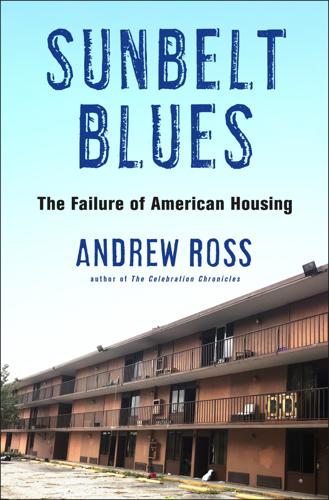
Sunbelt Blues: The Failure of American Housing
by
Andrew Ross
Published 25 Oct 2021
The Golden Oak homeowners association is more like a country club, while the concierge services on offer and exclusive privileges at the theme parks round out its CEO lifestyle profile, quite distinct from the community-oriented, mixed-income blueprint for Celebration. 12. Laura Kusisto, “Leaks and Mold Are Ruining the Disney Magic in Celebration, Florida,” Wall Street Journal, November 15, 2016, https://www.wsj.com/articles/leaks-and-mold-are-ruining-the-Disney-magic-in-celebration-florida-1479249246. 13. In September 2005, Negrin was able to raise an additional $72 million from investors to open a private equity fund with Amtrust Bank for real estate acquisitions across the country. Four years later, after the market turndown, the Amtrust fund handed back $24 million to investors.

The Human City: Urbanism for the Rest of Us
by
Joel Kotkin
Published 11 Apr 2016
“The state-of-the-art mega-suburbs of recent decades,” he suggests, “have produced horrendous levels of alienation, anomie, anxiety, and depression.”142 New Urbanist theorists and “smart growth” advocates claim that by using more traditional architecture and increased densities, we can once again enjoy the kind of “meaningful community” that existed in the past but is supposedly unachievable in conventional suburbs.143 Yet these claims that social comity can be created by architecture are somewhat exaggerated, to be charitable. New Urbanist Léon Krier, for example, claims that New Urbanism can bring together “diverse ages, races and incomes,” citing Seaside and Celebration, Florida, as his examples. This is certainly an odd choice, given that most of the homes in these developments are upward of $600,000, and many are around $1 million.144 To be sure, some ideas proposed by New Urbanists—such as offering more options for walking and biking, as well as the need for town centers—can improve the quality of suburban communities.
…
See Great Britain Broadacre City, 45 Bronx, 96–97 Brookhaven, New York, 177 Brooklyn, 97, 100, 111, 165, 177 Brueckner, Jan, 162 Bruegmann, Robert, 150, 186 Brussels, 41 Buenos Aires, 53, 65 Buffalo, 32 Built-up urban areas, 6, 269n5 Bulgaria, 138 Byrd, Hugh, 190 Byzantium, 24, 57 C Cabramatta (Australia), 158 Cairo, 24, 58, 60, 63–65, 69 California climate change policies in, 191 commuting times in, 187 dispersion in, 176 land-use regulations in, 173–174 opposition to densification in, 178 Callenbach, Ernest, 194 Calthorpe, Peter, 190 Cambay, India, 81 Cambridge, 40 Cambridge Science Park (UK), 185 Campanella, Richard, 107, 145 Campbell, Alana, 68 Campbell, Tim, 68 Canada agricultural land in, 193 dispersion in, 154 house size in, 179 housing shortage in, 175 immigrants to, 98 migration to, 137 millennial housing preferences in, 172 minorities in suburbs of, 158 seniors in workforce in, 181 seniors’ living preferences in, 181 Canley Vale, Australia, 158 Carcopino, Jérôme, 57 Carney, Mark, 175 Castells, Manuel, 93 CBS, 130 Celebration, Florida, 161 Chan, Angelique, 133 Chandler, Raymond, 145 Charles, Prince, 10 Charleston, 9 Chennai, 54, 68, 74 Cherlin, Andrew, 129 Chesterton, G. K., 103–104 Chicago financial jobs in, 186 foreign-born population of, 98 homogenization of, 106 and housing bubble, 152 inequality in, 95–96 as luxury-oriented city, 40 migration to, 173 in 19th century, 28, 116 population loss in, 32, 117 racial income inequality in, 156–157 social classes in, 41–42 suburban poverty around, 159 Childlessness, 16, 116, 128, 278n5.
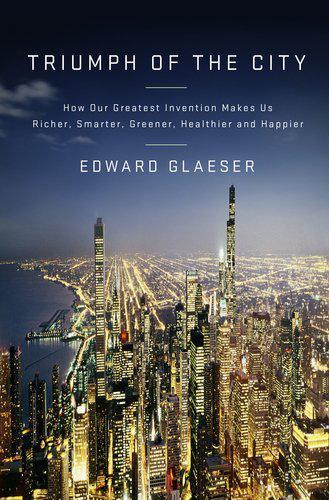
Triumph of the City: How Our Greatest Invention Makes Us Richer, Smarter, Greener, Healthier, and Happier
by
Edward L. Glaeser
Published 1 Jan 2011
The New Urbanism “stand[s] for the restoration of existing urban centers and towns within coherent metropolitan regions, the reconfiguration of sprawling suburbs into communities of real neighborhoods and diverse districts, the conservation of natural environments, and the preservation of our built legacy.” Poundbury is considerably more conservationist than the New Urbanist communities of America, such as Seaside, Florida; Kentlands, Maryland; Breakaway, North Carolina; and the Disney Corporation’s town of Celebration, Florida. These places do try to reduce car dependence, but their objectives seem as much social as they are environmental. In Celebration, 91 percent of people who leave their homes to work take cars. More people (64.5 percent) drive to work in Poundbury than in neighboring areas. Three quarters of Poundbury’s residents drive on their shopping trips.
…
C18. 214 “an early Victorian market town”: Worsley, “A Model Village Grows Up Gracefully.” 214 forces behind the New Urbanist movement: Watson et al., Learning from Poundbury, 8. 214 New Urbanism “stand[s] for . . . our built legacy”: Charter of the New Urbanism, www.cnu.org/charter. 214 more conservationist than the New Urbanist communities of America: Compare the Web site of Poundbury, www.duchyofcornwall.org/designanddevelopment_poundbury_livinginpoundbury.htm, with its note that “It is intended to be a sustainable development” and that it is “designed to maintain the quality of the environment” and its photographs of green space, with the Web site of Celebration, Florida, www.celebration.fl.us/towninfo.html, with its emphasis on its “strong sense of self ” and photographs of people at play. 215 In Celebration, 91 percent of people who leave their homes to work take cars: U.S. Census Bureau, Census 2000, P30, Means of Transportation to Work for Workers 16 Years and Over, Summary File 3, generated using American FactFinder. 215 More people (64.5 percent) drive to work in Poundbury: Watson, Learning from Poundbury, 37. 215 Three quarters of Poundbury’s residents drive on their shopping trips: Ibid. 215 About 70 percent of the homes in Celebration are single-family: U.S.

The Stack: On Software and Sovereignty
by
Benjamin H. Bratton
Published 19 Feb 2016
As the delamination and re-interweaving of Clouds and contemporary states point toward one possible future of proliferating and overlapping enclaves and exclaves, the Apple totality is a model for an elite sovereign format, walled off from the relative chaos of outside publics. As ever, utopias are closed systems—islands—but where “Apple” is finally located is not so clear. Whereas Disney's original plan for EPCOT Center was a utopian community, a real Disney city realized with diminished ambition as Celebration, Florida, the town of Apple, North Carolina, is the home of one of the company's most important data centers, but it is a very unlikely site for residential relocation. Apple's comprehensive attention to the interiority of product experience is well suited to a future featuring nation-sized gated communities wherever they may encircle themselves.
…
Today new enclave developments, and soon charter cities looping around them, are marketed as branded service platforms. In time, they will require more than this. In order to fully urbanize secession, they will have to take on the status of “homeland” and mobilize patriotism against the temptations of “exit.” Disney's Celebration, Florida, is a landmark project here, from its branded mythology to its status as a self-governing city and county. Elsewhere developers recognize that a fetish for arbitrary distinctions of hierarchy isn't a bug but a feature, and so at The Oaks, north of Los Angeles, residents who pass through one gate from the outside world still are excluded from the gated community inside the gated community, known as The Estates of The Oaks.
…
See also borders defined, 368–369 exceptionality of, 23, 32–33 free of information technology, 313, 315 gated communities as, 311–312 interiority/exteriority of, 173–175, 311–312 nomos of the Modern, 20, 369 refugee, 174–175, 308, 312 reversibility of, 23, 32–33, 312, 324 walled gardens compared, 187 Campus 2 (Apple), 186–187, 189, 320 Čapek, Karel, 279 capital, computational, 80–81 capitalism accomplishments of, 332 algorithmic, 72, 80–81 Anthropocenic, 213 cognitive, 110, 116, 203, 241, 258, 295 digital, 80 future of, 321 industrial/postindustrial, 80, 128, 254 of people versus things, 212 capitalist pricing problem, 333, 337, 369 carbon economy, 98 carbon footprint China, 259 of data computing, 92–96 electricity generation, 95 India, 95 stabilizing, 259, 303 US, 259 carbon governance, 88–90 carbon police, 306 Carpenter, John, 427n51 cars car+phone hybrid, 280 communication in, 280 driverless, 238, 279–283, 342, 344, 437nn57–58 (see also Google Car) hacking, 283–284 human-driven, 283, 344–345 redefining, 238–239 vehicle-to-vehicle (V2V) networks, 281–282, 438n60 cartography function of the state, 119 cassiterite, 82 Castells, Manuel, 416n28 catallaxy, 329–331, 375 Celebration, Florida (Disney), 311 cellular phones. See mobile devices Center for Bits and Atoms (MIT), 226 Central Bureau of the Map of the World, 413n5 centralized cybernetic economic planning systems, 58–61, 328–329 Central Nervous System of the Earth (CeNSE) (HP), 192 Cerf, Vint, 42, 62–63 chains of interfaciality, 231, 233–234, 338–339 change, commitment to, 303–304 charter city movement, 310–311 Chicago Boys, 385n25 Chile, 58, 328 China boundary enforcement, 310 carbon emissions, 259 conflict with Google, 9, 112–115, 143–144, 245, 361 factory cities in, 179, 189 internal illegal aliens, 310, 409n39 Internet in, 113 jurisdictional anomalies, 310 mobile operating systems popular in, 398n21 rain, control of, 398n21 social media in, 126 software espionage, 398n21 state services apparatus, 316 Universal Postal Union, 194 weather data, claim over, 97 Christianity, 239 Chrysler Building, 183 Church-Turing thesis, 78 Cisco Systems, 88, 179 cities.

Makeshift Metropolis: Ideas About Cities
by
Witold Rybczynski
Published 9 Nov 2010
See also City Beautiful movement; Garden City movement; Radiant City Bilbao Effect, 135, 137, 138, 139, 140, 141, 199 Bilbao Guggenheim Museum (Spain), 133–35, 137, 140 Boca Raton, Florida, 106 Bon Marché stores, 97 Boston, Massachusetts: Bellamy’s vision of, 29; and benefits of cities, 175; and City Beautiful movement, 16; city center of, 76; density of, 177; department stores in, 97; downtown of, 176, 177; employment in, 183; government center in, 82; Jacobs’s visit to, 57, 90; North End of, 57, 90, 91; as port city, 118; riots in, 79; shopping center in, 124–25; size of, 165; as transit-oriented city, 183; waterfronts in, 113, 118, 124–25, 148; West End of, 90 Boston Redevelopment Authority, 124 Boulder, Colorado, 83 Bridgeport, Connecticut, 38 Broadacre City: and cities Americans want, 197; spread of concept of, 76–77; Wright’s vision of, 64–65, 69–70, 71–75, 79, 92, 114 Brockett, John, 9 Brookfield Properties, 142 Brooklyn Bridge, 136 Brooklyn Bridge Park, 1–3, 4–8, 120, 150, 197 Brooklyn Bridge Park Development Corporation, 4 Brooklyn Heights Promenade, 4 Brooklyn, New York, 1–8, 30, 54, 104, 113, 120 Brooklyn-Queens Expressway, 4, 5 Brooks, David, 170 Brussels, Belgium, 95 Bryant Park (Manhattan), 1, 27 Bucks County, Pennsylvania, 166 Buffalo, New York, 12–13, 118 Burj Khalifa (Dubai), 77 Burlington Arcade (London), 95 Burlington, Vermont, 83 Burnham, Daniel H., 14, 21, 22, 24, 64, 96, 116, 117 Calatrava, Santiago, 141 Calgary, Canada, 82 California Institute of Technology, 25 The Cannery (San Francisco), 121, 122 Capper, Arthur, 159 Capper/Carrollsburg housing (Washington, D.C.), 160–61 carbon emissions, 187–88, 189, 190 Carrollsburg Dwellings (Washington, D.C.), 159 Cash for Clunkers program, 185–86 Celebration, Florida, 86 Central Park (New York City), 2, 3, 5, 6, 7, 30, 40, 62, 87 Centrosoyuz Building (Moscow, Russia), 46 Chareau, Pierre, 41 Charleston, South Carolina, 87, 118 Charlotte, North Carolina, 183 Charlottesville, Virginia, 83 Chicago, Illinois: Back-of-the-Yards in, 57, 90; Burnham and Bennett’s plans for, 24, 64, 116–17; and City Beautiful movement, 16, 24; Civic Center (Daley) Plaza in, 82; department stores in, 96; downtown of, 89, 176; and Garden City movement, 27, 30; Great Fire in, 27; iconic architecture in, 136; Jacobs’s visit to, 57; John Hancock Building in, 77; Le Corbusier’s views about, 68; motto of, 30; neighborhoods in, 178; public housing in, 82; and ranking of global cities, 174; Robert Taylor Homes in, 49; size of, 165; State Street Mall in, 84; as transit-oriented city, 183; waterfronts in, 116–17, 118, 125; World’s Columbian Exposition (1893) in, 19–21, 22, 23, 24, 59, 117.
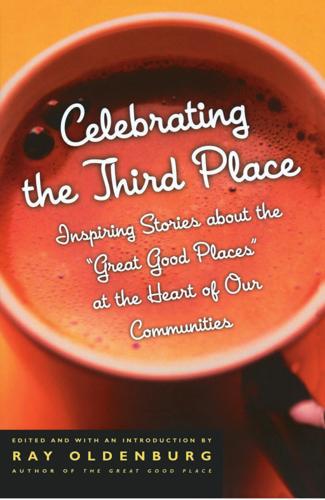
Celebrating the Third Place: Inspiring Stories About the Great Good Places at the Heart of Our Communities
by
Ray Oldenburg
Published 30 Nov 2001
Officials of a popular coffeehouse chain often claim that their establishments are third places, but they aren’t. They may evolve into them but at present, they are high volume, fast turnover operations that present an institutional ambience at an intimate level. Seating is uncomfortable by design and customers in line are treated rudely when uncertain of their orders. Visiting Celebration, Florida, my wife and I arrived at its version of a friendly diner three minutes late for breakfast and were told it couldn’t be served. “Three minutes,” I protested, “Are you certain we can’t have breakfast?” The man was quite certain. To my wife’s embarrassment, we left to find breakfast elsewhere.
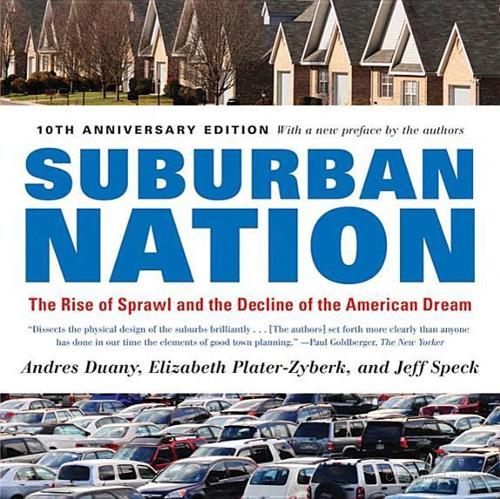
Suburban Nation
by
Andres Duany
,
Elizabeth Plater-Zyberk
and
Jeff Speck
Published 14 Sep 2010
A/B grid adjacency, accessibility versus advertising, retail aesthetics: and siting of houses ; of sprawl affordable housing; architecturally compatible; design and location of; federal policy on; inner-city; public process and; in regional planning; state funding of; types of age value agricultural land, preservation of air pollution Alexandria (Virginia); Torpedo Factory Alfandre, Joe alleys; construction costs for amenities American Association of State Highway Transportation Officials (AASHTO) Defense Committee of American Automobile Association Ames (Iowa) anchor tenants Angelides, Phil Annapolis (Maryland) Ann Arbor (Michigan) apartments: above stores; in mixed-use development; outbuilding; in traditional neighborhoods Appalachian Trail architects; role in fighting sprawl of architectural codes architecture; homebuilders and; in new towns and villages; pedestrian-friendly; use of traditional detailing artists’ cooperatives assisted-care facilities Atlanta; Perimeter Center section of; regional transportation authority in; Riverside automobiles: accidents; commuting by; dependency on; design based on needs of; downtown viability undermined by; federal subsidies for; financial impact of ownership of; increase in use of; infrastructure required by(see also roadways); pedestrians versus; public realm and; regional planning and; school construction and; sociopathic behavior associated with; subsidization of; teenagers and; urban poor and lack of; see also traffic Baltimore: Camden Yards; Roland Park Barnes, Roy Bedford (New Hampshire) Bel Geddes, Norman Belmont (Virginia) Bender, Christopher Berlin (Germany) Bethesda (Maryland) Beverly Hills (California) bicycle-friendly street design big-box retail Blake, William Blakely, Edward Boca Raton (Florida) Boddy, Trevor Bogosian, Eric Bohrer, Ed Boston; Back Bay; Beacon Hill; Emerald Necklace boulevards Box, Paul Britain, traffic patterns in Brown, Catherine Brown, Peter bubble diagram building types; in new towns and villages; variety of; zoning codes and business parks Byrne, John California; growth rate in; highway traffic in; segregation of housing by income in; wall plane of houses in; see also specific municipalities Calthorpe, Peter Campbell, Robert capital, cost of Carson, Rachel Celebration (Florida) center-line radii chain stores Charleston (South Carolina); St. Philip’s Episcopal Church Chattanooga (Tennessee) Chellman, Chester E. (Rick) Chicago; Cabrini Green housing project;; Lake Street children: in new towns and villages; suburban; see also schools Churchill, Winston Cisneros, Henry citizen participation City Beautiful movement civic buildings; decay of; in new towns and villages; in traditional neighborhoods civic decorum classicism Clean Air Act Cleaver, Emmanuel Cleveland; Neighborhood Progress Foundation Clinton Administration clusters Cohen, Zev Cold War collector roads; new towns and villages and; width of commercial development, see malls; office facilities; retail; shopping centers community: abrogation by public sector of responsibility for; affordable housing and; citizen involvement in building; civic buildings and; developers and; government commitment to; homebuyers’preference for; impact of automotive infrastructure on; modes of development fostering, see new towns and villages; in public realm; variety and community policing Community Reinvestment Act commuters compliance review process congestion pricing Congrès Internationaux d’Architecture Moderne (CIAM) Congress, U.S.

No Is Not Enough: Resisting Trump’s Shock Politics and Winning the World We Need
by
Naomi Klein
Published 12 Jun 2017
Obviously, there were global branded hotel and resort chains before. But Trump pioneered the idea that where you work (an office tower), where you live (a condominium), and where you play (your golf club or vacation destination) would all be franchises of a single global luxury brand. Much like Celebration, Florida—Disney’s fully branded town—Trump was selling the opportunity for people to live inside his brand, 24/7. The real breakthrough, however, came when Mark Burnett, head of a reality TV empire, pitched Trump on the idea of The Apprentice. Up until then, Trump had been busy coping with the fallout from his bankruptcies and the impatience of his bankers.
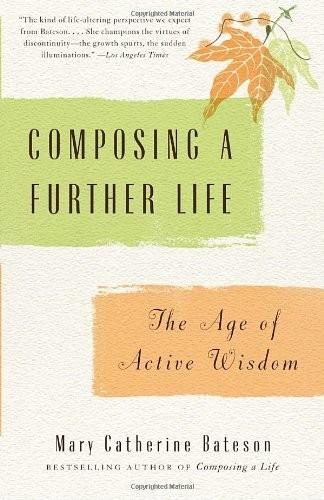
Composing a Further Life: The Age of Active Wisdom
by
Mary Catherine Bateson
Published 13 Sep 2010
In 2002, Ellen Goodman, author and syndicated columnist for The Boston Globe, then sixty-one years old, invited me to a small, informal conference with a group of women that she and Patricia Schroeder, who served for twenty-four years in the House of Representatives from Colorado, were organizing, to discuss the approach of retirement age and how they—we—felt about it. We met that December in Celebration, Florida, over a weekend, a group of seven women, all of whom had had careers and all of whom, somewhat to my surprise, were currently married and had grown-up children. We were all in our sixties, each with a range of degrees, books, and titles to her credit. A novelist. A psychotherapist. A college president.
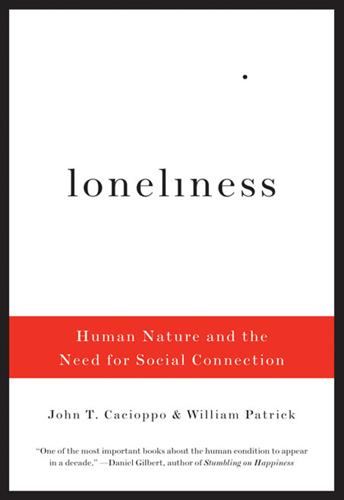
Loneliness: Human Nature and the Need for Social Connection
by
John T. Cacioppo
Published 9 Aug 2009
In terms of health and well-being, science tells us that there are unintended negative consequences when, as Walter Lippmann put it a century ago, “we have changed our environment more quickly than we know how to change ourselves.”13 Here in the United States, progressive architects and developers have heeded Jane Jacobs’s call to take the imperatives of social connection more seriously. They try to replicate, in new communities such as Celebration, Florida, the physical aspects of small-town life—clustered housing, sidewalks, front porches for sitting—that facilitate social connection. Other communities, such as Treetops in Easthampton, Massachusetts, try to reintegrate older and younger people in a single living arrangement. In the United Kingdom, the Prince of Wales has championed attempts to mirror the traditional English village in contemporary housing.
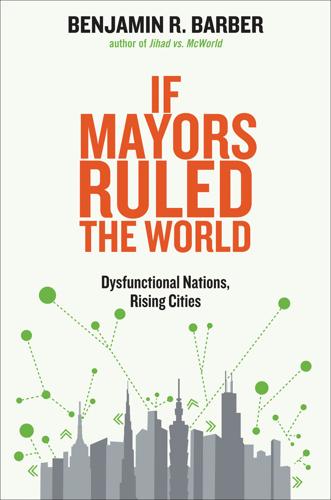
If Mayors Ruled the World: Dysfunctional Nations, Rising Cities
by
Benjamin R. Barber
Published 5 Nov 2013
His list of “regions with the highest levels of inequality” include Raleigh-Durham, San Francisco, Washington-Baltimore, Austin, Houston, New York, West Palm Beach, San Diego, Los Angeles, and Boston, while those with the lowest levels of inequality are Milwaukee, Portland, St. Louis, Memphis, Salt Lake City, Oklahoma City, Buffalo, Louisville, Indianapolis, Grand Rapids, and Las Vegas. Pay for jobs turns out to be critical. 17. There are truly new cities: not just new towns like Celebration, Florida, built by Disney, or planned and “garden cities” growing out of the new urbanism movement such as Radburn, New Jersey, before World War II, or Greenbelt, Maryland, after, but cities like Las Vegas that, as Robert Venturi quips, “was built in a day” and “not superimposed on an older pattern” (Robert Venturi et al, Learning from Las Vegas, rev. ed., Cambridge: MIT Press, 1977, p. 18).

Consumed: How Markets Corrupt Children, Infantilize Adults, and Swallow Citizens Whole
by
Benjamin R. Barber
Published 1 Jan 2007
The Joe Camel ads for cigarettes that have given way to the slick beer ads featuring turtles, parrots, and other kiddie staples, like the roadside playpens at McDonald’s and the Peter Pan–themed rides of Disneyland (pirates and cowboys and Indians all still there a hundred years later) are designed not to help children remain children but to “help” children become grown-up consumers of cigarettes or lite beer or Big Macs or Disney’s whole lifeline of products from animated films to new-town utopias like Celebration, Florida. Disneyland sells childhood mythology in order to reap grown-up profits. The play at the theme park is pay as you go, a relatively passive “ride” experience that happens to you in return for your dollar. In these new theme-park playgrounds that now occupy the leisure time of cash-carrying kids, parents are reduced to the role of minders with wallets.
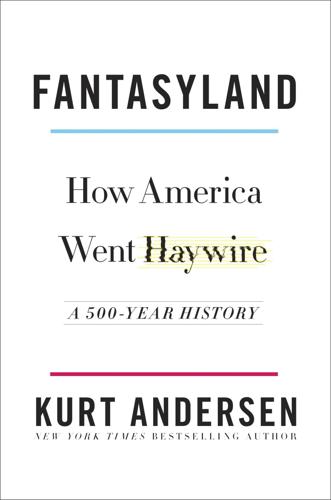
Fantasyland: How America Went Haywire: A 500-Year History
by
Kurt Andersen
Published 4 Sep 2017
These days thousands of couples get married every year at Disney theme parks—women imagining their weddings as the final scenes of Cinderella or themselves as Ariel or Belle or Jasmine in character-specific gowns purchased through Disney’s Fairy Tale Weddings division, attended by strangers in royal-servant getups. To produce our documentary, we also went to Walt Disney World—and to Celebration, Florida, where I’d been before. Celebration is the real town that Disney built at the south end of Disney World in the 1990s. It’s an example of New Urbanism, the movement among architects and planners, beginning in the 1980s, that considers the development of cities and suburbs since World War II disastrously misguided.
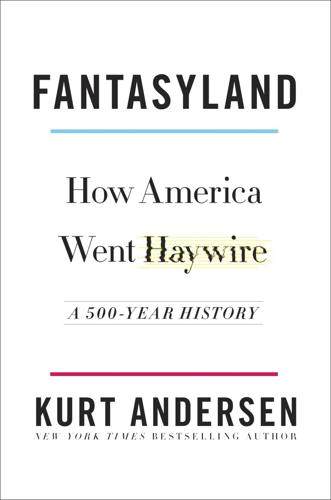
Fantasyland
by
Kurt Andersen
Published 5 Sep 2017
These days thousands of couples get married every year at Disney theme parks—women imagining their weddings as the final scenes of Cinderella or themselves as Ariel or Belle or Jasmine in character-specific gowns purchased through Disney’s Fairy Tale Weddings division, attended by strangers in royal-servant getups. To produce our documentary, we also went to Walt Disney World—and to Celebration, Florida, where I’d been before. Celebration is the real town that Disney built at the south end of Disney World in the 1990s. It’s an example of New Urbanism, the movement among architects and planners, beginning in the 1980s, that considers the development of cities and suburbs since World War II disastrously misguided.